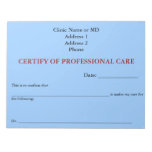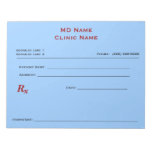3 Ways Tablets Will Improve Healthcare in 2014
Over the last five years, tablets have made their way into almost every medical practice in the U.S. In fact, an ongoing Manhattan Research survey found that physician tablet adoption rates spiked from 30% in 2010 to a surprising 72% in 2012.
Any electronics salesman could tell you that the mobility, instant Internet access and note-taking capabilities featured in most tablets are reason enough for doctors to purchase one for the practice. However, this would be cutting tablets’ value short.
Tablets posses an abundance of features that can make treating patients easier for physicians, and, in turn, allow them to make better clinical decisions.
Today, let’s take a look at the emerging medical uses for tablets and how they’ll help you become a better physician.
Mobile EHRs
According to a 2013 survey from AmericanEHR Partners, 51% of physicians use tablets to access electronic health records (EHR). And with companies rolling out more powerful PC-Tablet hybrid solutions last year, mobile-EHR adoption rates are only expected to increase.Most major EHR vendors are currently developing tablet-friendly versions of their software that let physicians securely schedule appointments, view patient charts, manage tasks and make treatment decisions directly from their mobile devices.
With tablet EHRs, doctors get anywhere, anytime access to the clinical, administrative and financial information they need to improve productivity and enhance patient care – even when they’re not in the office.
Look for software solutions that feature timed lockouts and advanced data encryption. This way, you can secure sensitive patient health information across multiple devices and avoid HIPAA scrutiny for compromising private data.
Digital Imaging
Imagine if surgeons could look at medical images right away when a patient is rolled into the emergency room instead of waiting to upload information from a CD or USB drive into a desktop. This would allow emergency care physicians to immediately determine if the condition was a Level 1 or Level 2 case with no lag time.Instant access is the number one benefit of medical imaging apps available on tablet devices. Because of their large screens and high-resolution capabilities, tablets make it easier for physicians to load and share medical images in an easy-to-see format.
In a profession where every second could mean the difference between life and death, urgency is key.
Tablet Health Apps
The list of ways tablets empower care providers grows every year, and should grow even faster now that the FDA has published its final guidelines for mobile app regulation.Today, there are more than 40,000 health and wellness apps on the market with mobile health revenues projected to climb into the billions by 2016. Currently, iTunes is chock-full of apps that can help you do everything from measure vital signs to track patient adherence.
One such app that’s available on the market is SpiroSmart. It uses a tablet’s microphone to take lung measurements of breath capacity. This could help more patients with asthma, chronic obstructive pulmonary disease and cystic fibrosis check their vitals, especially because home-testing systems called spirometers can cost thousands of dollars.
Researchers at Seattle Children’s Hospital and the University of Washington are seeking FDA approval for the app. If you’re interested in finding out more information on how the FDA regulates medical apps, click here.
As you can see, there are plenty of reasons for using a tablet other than playing the most recent version of Temple Run. Tablets’ potential for healthcare are boundless. If you haven’t already, it may be a good idea to familiarize yourself with tablets, so you can realize the benefits of this modern medical instrument.
__________________________________________








No comments:
Post a Comment